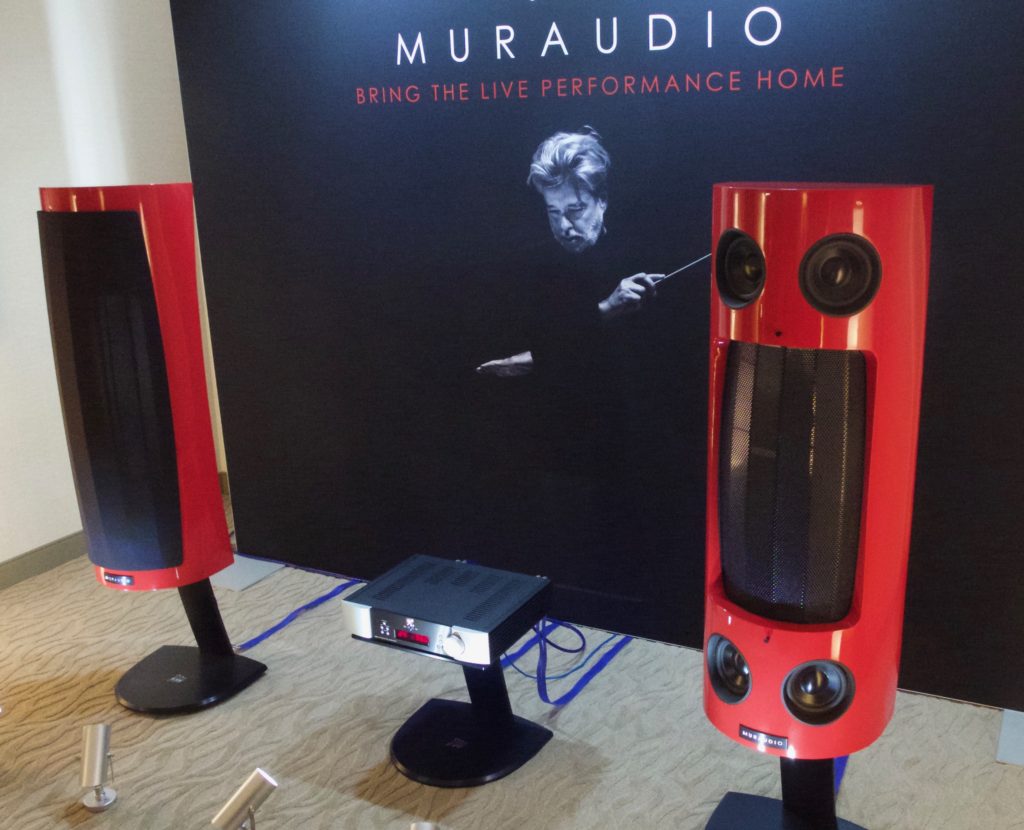
Muraudio SP1 Electrostatic Loudspeakers
The Muraudio SP1 Electrostatic Loudspeakers ($14,700) were making their debut at this show. I have to say these are very exciting new speakers. The SP1 uses one of Muraudio’s proprietary electrostatic panels — SP stands for single panel. The electrostatic panels cover the range from 750Hz up and is mounted in a thick, very curved, mostly open-backed cabinet of birch plywood. Because the area behind the panel is open, the panel operates as a dipole. It radiates as much energy backward as forward.
To reproduce frequencies below 750Hz the SP1 has four 6.5-inch dynamic drivers (that’s the driver’s frame size; the cone is about 5 inches across). These drivers are arrayed in pairs above and below the electrostatic panel, sunk about 2 inches into the enclosure which, per Harman, improves the phase alignment of their output with the panel’s output. The cones also point slightly to the side and not straight ahead to improve dispersion over an arc of about 120° and to ideally match the panel’s dispersion characteristics. Muraudio specs out the SP1 with a frequency response of 45Hz-22kHz, ±3dB, and a maximum output of 103dB measured at 2m.ou.
This is a speaker with a big WOW factor; I don’t know if over time that the wow factor would be a good or bad thing. I can tell you that the top end and midrange are very transparent, very open and the top-end is beautifully extended. My only real concern was in the lower midrange and upper bass. The bottom end had a lot of impact and speed that matched the midrange and top-end. It was just in that frequency range that the speaker sounded a little thick and slow compared to the deeper bass and midrange.
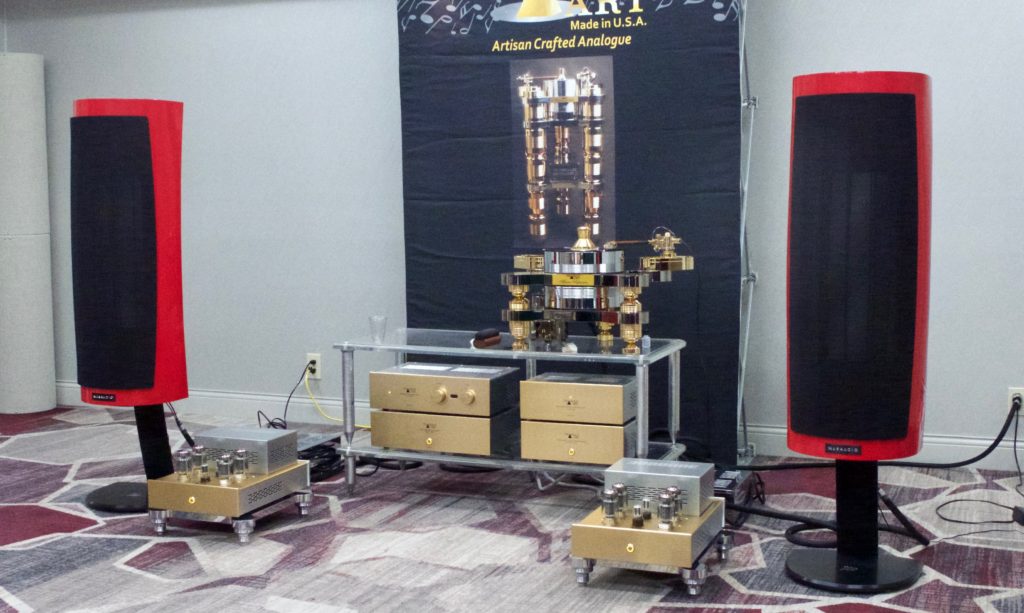
I did get the privilege of hearing this speaker in the TriAngleArt room after the show was over. With the wonderful analog source and the great sound of the TriAngle Art tube electronics, the speakers were much better. On this short listen, I still wasn’t sure if they spoke with one voice, but what they do well is so good that they could be a game changer.
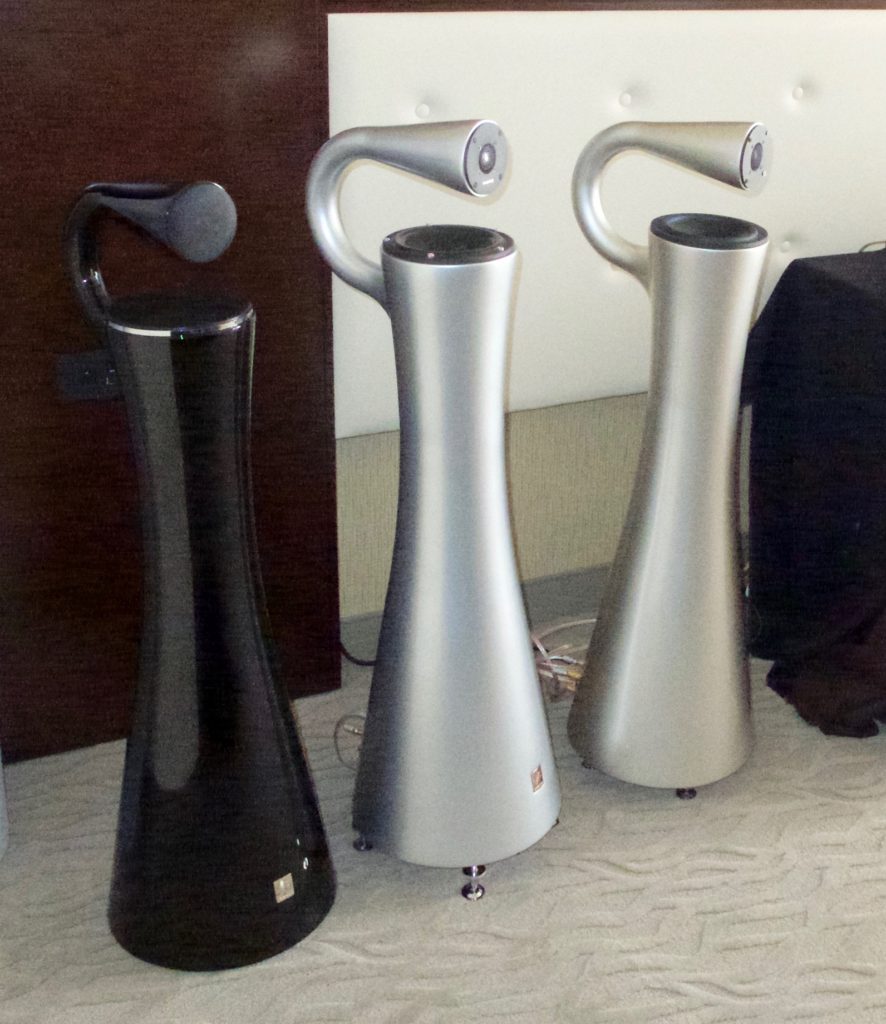
Unisinger UIA-2 Silver Speakers
Unisinger Inc. of Cupertino, CA debuted the Unisinger UIA-2 Silver Speakers ($6,999/pair), the Unisinger UIA-2 Gold Speakers ($10,990/pair) and the Unisinger UIA-2 Platinum Speakers ($28,880/pair). They were using some very innovative technology to work with the proper arrival time of all frequencies. Since they are located in the San Francisco Bay area, they are close to us, and I hope we can visit them in person and get a better understanding of these unique speakers.
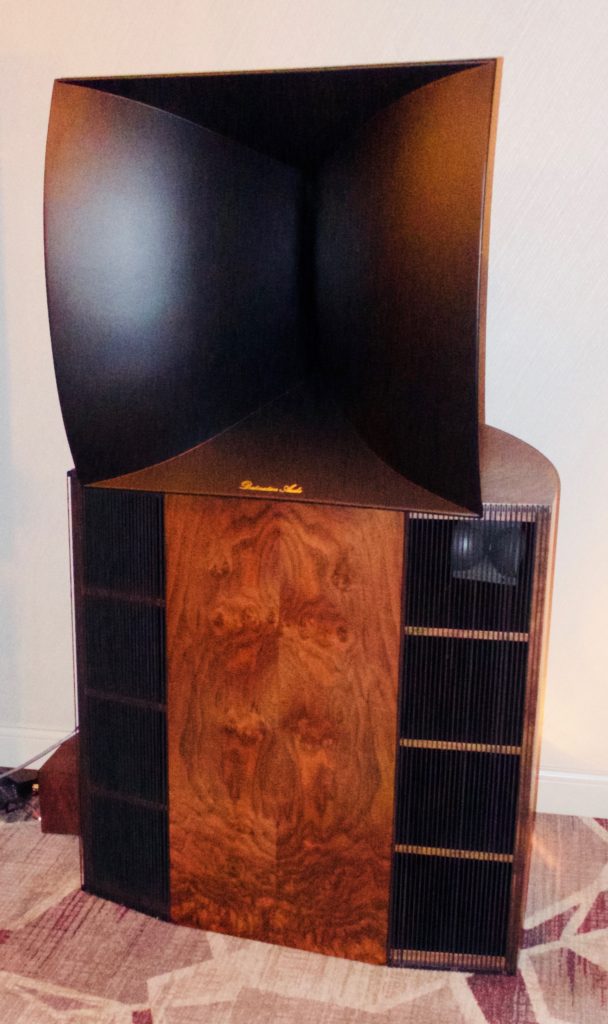
Destination Audio Horn Loudspeakers
The Destination Audio room was one that several other reviewers said they were looking forward to hearing. The Destination Audio Horn Loudspeakers ($95,000/pair) are very interesting with a vintage-looking cabinet and a huge horn mounted on top. I was really looking forward to hearing what this speaker could do, but that didn’t happen either time I was in the room. Even though they had a TriangleArt Master Reference turntable system ($39,999) sitting in the room, they were not using it either time I was there. And even though the speakers are 105dB efficient, they played them at very low volumes. When I asked for the volume to be turned up, I was told that they were playing at the appropriate volume. I heard several others say that they thought the sound was boring. I don’t think it was boring, but I think the digital source and the low volume didn’t show what these speakers can sound like. So, while I found the speakers very interesting, sadly I have no idea how they can sound.

Whammerdyne 2A3 SE model DAA3+ RAM
The California Audio Show was the debut for the Whammerdyne 2A3 SE model DAA3+ RAM ($6,900) from Whammerdyne Heavy Industries. If you don’t already know, the DAA stands for Damn Awesome Amp. From what I heard at the show, I certainly think the name fits. This is probably the product from this show that I would most like to review. This amp uses (dual) auto-formers (left and right channels) and front-panel input volume controls. These are custom wound tapped transformers of ultra-wide bandwidth with 23 precision attenuation steps. There are also selectable dual RCA source inputs (Input 1 and Input 2).
It uses ultra-custom made matched output transformers special core material and high bandwidth, extremely low insertion loss, low distortion and low DCR design, -1 dB down 15 Hz and 85 Khz, gapped for 60 Ma standing current not subject to dc saturation, and low phase shift. The 2A3 output tubes can be upgraded, and the user can select from three options. It puts out 4+ watts per channel with peak power of 6.5 watts per channel; more than enough for my 104dB efficient Teresonic XR speakers.
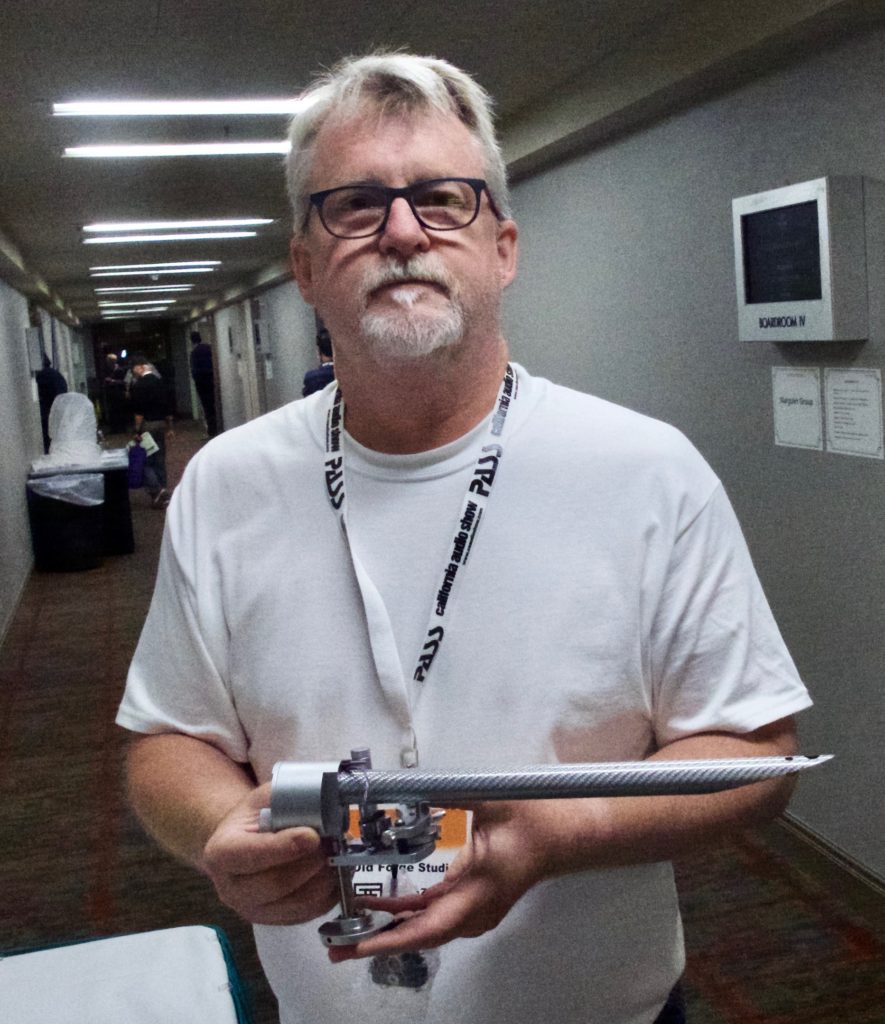
The Wand Uni-pivot Tonearm
This product was not officially at the show, but David Cope of Old Forge Studio was proudly showing off The Wand. He had the 12-inch, carbon fiber, uni-pivot tonearm, imported from New Zealand. It is beautifully made, and I think he said they range in price from $1,700 for the base 9-inch one to $3,500 for this 12-inch top of the line tonearm. What interests me the most is the talk about how well it works with London Decca phono cartridges. There are some of us who have been looking for the best tonearm for a Decca for over 40 years. Hopefully, we will be following up with an article on this tonearm in the near future.
